Types of nuclear reactors_ A nuclear reactor provides and controls the release of energy from breaking the atoms of specific elements. In a nuclear power reactor, the power released is used as heat to produce steam to generate electricity.
The principles for employing nuclear power to generate electricity are identical for most types of reactors. The released energy from continuous fission of the elements of the fuel is provided as heat in either a gas or water to produce steam. The steam drives the turbines, which generate electricity the same as most fossil fuel plants.
Most of the existing reactors provide the heat required to turn turbines that drive electric-power generators. There are also various research reactors, and some navies have surface ships or submarines driven by reactors. There are several varieties of power reactors, but only the light-water reactor is broadly used. This variety is presented in detail here.
High-Temperature Gas-Cooled Types of Nuclear Reactors
The high-temperature gas-cooled reactor (HTGR) is fueled by a composite of graphite and fuel-bearing microspheres. We have two competitive designs for this type of reactor:
- A “pebble bed” German system_ this type uses spherical fuel components, 60 mm (2.5 inches) in diameter, including a graphite-and-fuel mixture covered in a graphite shell.
- An American version_ of this type, the fuel is filled into precisely placed graphite hexagonal pebbles that interlock to form the vessel’s core.
In both choices, the coolant consists of nearly 100 bars of pressurized helium or approximately 100 standard atmospheres. In the German model, helium passes over interstices at the bed of the spherical fuel components. In contrast, in the American mode, it flows through holes in the graphite prisms that adjust along the axis of the core zone in the reactor vessel.
Both types can operate at very high temperatures as graphite has a high sublimation temperature and helium is entirely inert chemically. The hot helium can be employed directly in a high-temperature gas turbine as the working fluid or use its heat to generate steam.
Experimental prototypes of both German and American designs were constructed and operated from the 1960s to the 1980s. By the beginning of the 1990s, no power plants were built based on these methods. In 2000, a Chinese reactor “The High-Temperature Reactor-10 (HTR-10)” based on a German design, began generating electricity at a nominal steady-state power rate of 10 megawatts. The HTR-10 produces power and heat for Tsinghua University near Beijing.
Liquid-Metal Reactors
Sodium-cooled fast-neutron-spectrum liquid-metal reactors (LMRs) gained much attention in the 1960s and ’70s, while it was found that their breeding capacities would soon be required to supply fissile material to a quickly expanding nuclear industry. In the 1980s, it became clear that this was not a practical expectation, and the enthusiasm waned. However, the developmental work of the previous decades resulted in the development of several LMRs around the world—in Russia, the United States, France, Britain, Germany, and Japan. Most LMRs are fed with uranium dioxide or a mixture of uranium-plutonium dioxides.

Some LMRs are of the loop type, including pumps and heat exchangers outside the primary reactor vessel. Others are of the pool type, including a large volume of central sodium in a pool containing the main pumps and the primary-to-secondary heat exchanger. In all varieties, the heat is removed from the core by primary sodium and is transferred to a nonradioactive secondary sodium loop, which works as the heat source for a steam generator and heats the h2O in a tertiary loop to drive a turbine.
The pool type has some security advantage, as the great volume of primary sodium heats up simply slowly even if no energy is extracted. Therefore, the reactor is completely isolated. The core in these types is a tightly arranged bundle of fuel in steel cladding which the sodium coolant passes to remove the heat. Almost all of the LMRs are breeders or can work as breeding (they all provide more fissile material than they spend).
CANDU Reactors
Canada has directed its developmental aims on reactors that employ abundant domestic natural uranium as fuel without resorting to enrichment services supplied only by other countries. The outcome of this system is the Canada Deuterium Uranium (CANDU) reactor. They are a line of natural uranium-fueled reactors moderated by heavy water. This kind of reactor consists of a tank or vessel, including a cold heavy water moderator in the state of atmospheric pressure. The tank is pierced by pressure tubes composed of zirconium alloy containing natural uranium fuel, and heavy water coolant is circulated through them.
A CANDU reactor vessel is aligned horizontally in contradiction to the more common LWR reactors aligned in a vertical arrangement. Electric power production is obtained by transferring the heat of fission into the heavy water, circulated to a steam generator. In the secondary loop, the light-water steam exited the steam generator and was then transported through a traditional turbine cycle.
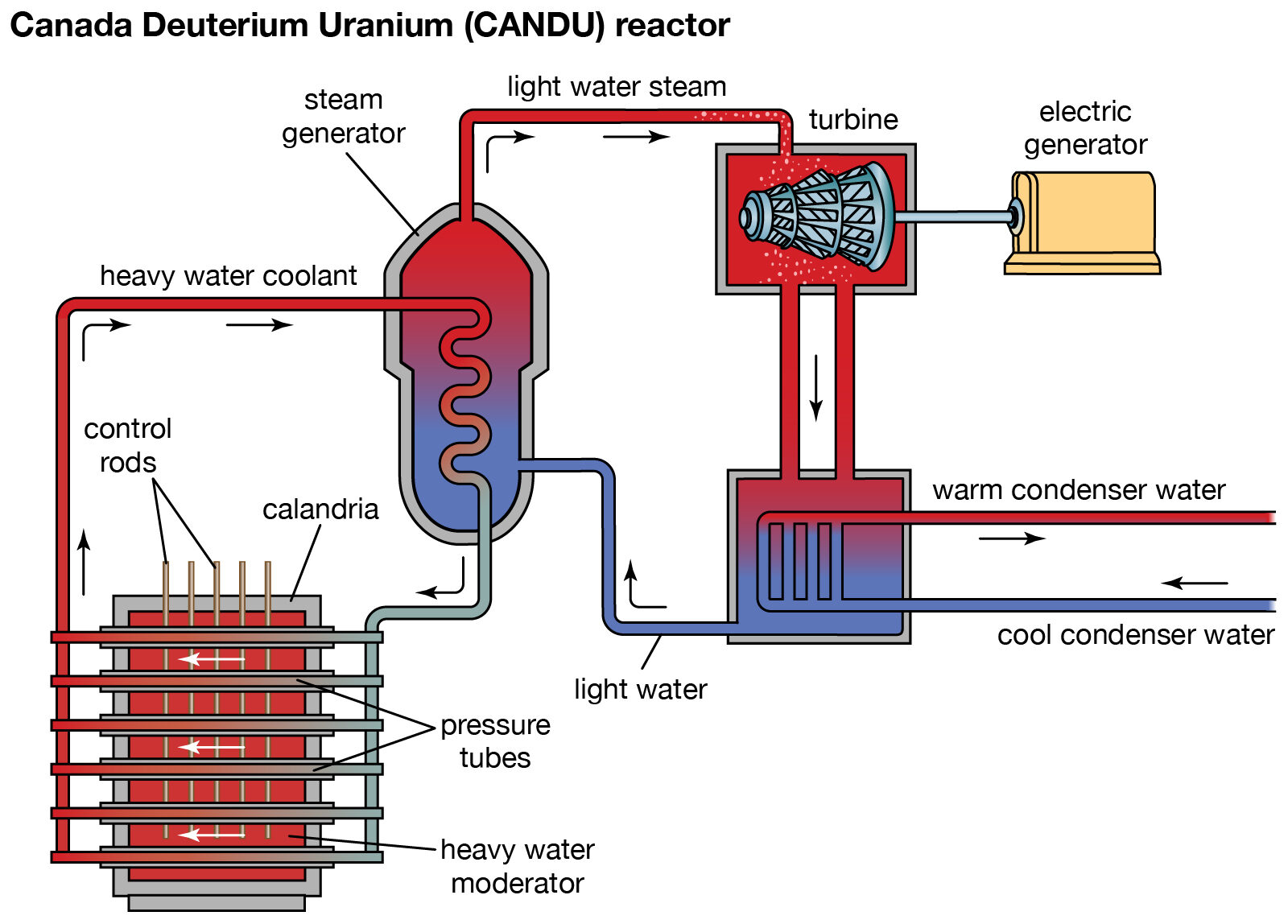
The fuel arrangement of a CANDU reactor, which includes a bundle of short zirconium alloy-clad tubes carrying natural uranium dioxide pellets, can be replaced while the system is operating. A new assembly is placed at one end of a pressure tube, and the wasted fuel is collected at the opposite end. This innovation has given this type higher capacity factors compared to the other types of nuclear reactors.
The capacity factor is the ratio of time a reactor operates at full power through a given period versus the total usable time during that same period. Therefore, a capacity factor of 1.0 indicates that a reactor operates 24 hours a day at full power over the entire period being counted. Some countries have acquired CANDU reactors to be free of foreign enrichment services.
Advanced Gas-Cooled Reactor Types of Nuclear Reactors
The advanced gas-cooled reactor (AGR) was constructed in the United Kingdom as the Calder Hall class’s reactors that merged plutonium production and power generation. Calder Hall, the first nuclear station to feed an appreciable amount of power into a civilian network opened in 1956.
The Calder Hall reactor configuration was fed with slugs of natural uranium canned in aluminum, and was cooled with carbon dioxide, and used a moderator including a pierced block of graphite by fuel channels. In the AGR, approximately 2 percent enriched uranium dioxide is stored in zirconium-alloy tubes that pierce a graphite moderator bar. This design employs fast neutrons and is referred to as a fast reactor. A coolant of carbon dioxide transports heat to a steam generator, where the heat is directed to the secondary loop and finally to a traditional steam-turbine cycle.
Pressurized Water Reactor (PWR)
PWR is the most well-known type, with about 300 working reactors for electricity generation and several hundred more used for naval propulsion. We use water as a coolant and moderator in PWRs. The design is identified by having a primary cooling circuit that flows through the reactor’s core under very high pressure and a secondary circuit in which steam is produced to drive the turbine. These are named VVER types in Russia.
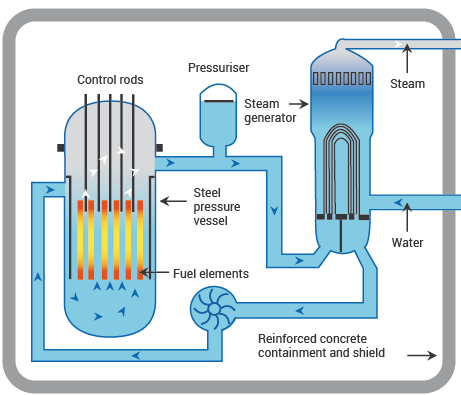
A PWRs have fuel assemblies of 200-300 rods separately, adjusted vertically in the core, and a considerable reactor would have approximately 150-250 fuel assemblies, including 80-100 tonnes of uranium.
Water in the core reaches nearly 325°C; hence, it must be kept under approximately 150 atmospheric pressure to prevent it from boiling. If any of the water turned to steam in the primary cooling circuit, the fission reaction in the reactor would slow down. This negative feedback consequence is one of the security features of the type.
The secondary loop has less pressure, and the water boils in the heat exchangers, which are the steam generators of the system. The steam turns the turbine to generate electricity and is then condensed and passed again to the heat exchangers.
Boiling Water Reactor (BWR)
This kind of reactor has several similarities to the PWRs, but there is only one circuit where the water is at lower pressure compared to the PWRs (approximately 75 times atmospheric pressure), so water boils in the core at nearly 285°C. The reactor operates with 12-15% of the water in the top section of the core as steam, and consequently with a more negligible moderating effect and thus performance there. BWR units operate in a load-following form more readily than PWRs.
The provided steam flows through drier plates and steam separators over the core and then to the turbines. As the water around the fuel and core is always contaminated with marks of radionuclides, the turbine needs a shield and radiological protection given during maintenance. Most of the radioactivity is very short-lived, so the turbine hall can be started soon after the reactor is shut down.
A BWR fuel assembly contains 90-100 fuel rods, and there are up to 750 packs in a reactor core, including up to 140 tonnes of uranium.
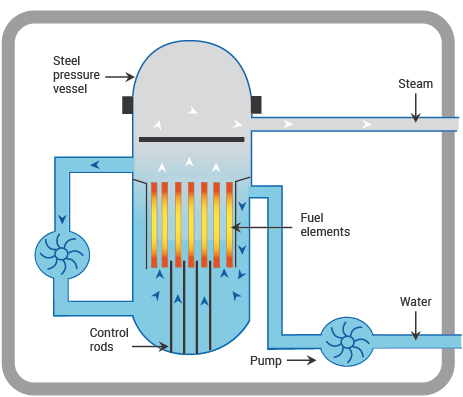
Light Water Graphite-Moderated Reactor (LWGR)
The central LWGR design is the RBMK, a Soviet design developed from plutonium generation reactors. It uses long (7 meters) vertical pressure tubes working through graphite moderators and is chilled by water, which boils in the core at 290°C and has a pressure of about 6.9 MPa. Fuel in this system is low-enriched uranium oxide shaped in 3.5 meters long fuel assemblies. With moderation because of the fixed graphite, excess boiling decreases neutron absorption and cooling without inhibiting the fission reaction.

Types of Nuclear Reactors Based on the Loop Number
Nuclear reactors can be categorized based on the loop number in the system. One, two, and three-cycle reactors are available in the power stations. Basic power cycles in nuclear power plants are Single-loop cycles, as shown in the figure below. It shows a boiling-water reactor (BWR), but it can be a high-temperature gas-cooled reactor (HTGR) in the case of replacing helium with steam. The second figure presents a two-loop cycle type. The primary loop described here can be a CANDU pressurized heavy-water reactor (PHWR), a pressurized-water reactor (PWR), or a helium HTGR.
The Three-loop cycle is presented in the third figure. This type can be found only in sodium-cooled reactors, where the second loop of nonradioactive sodium is constructed between the primary radioactive cycle and the steam generator.
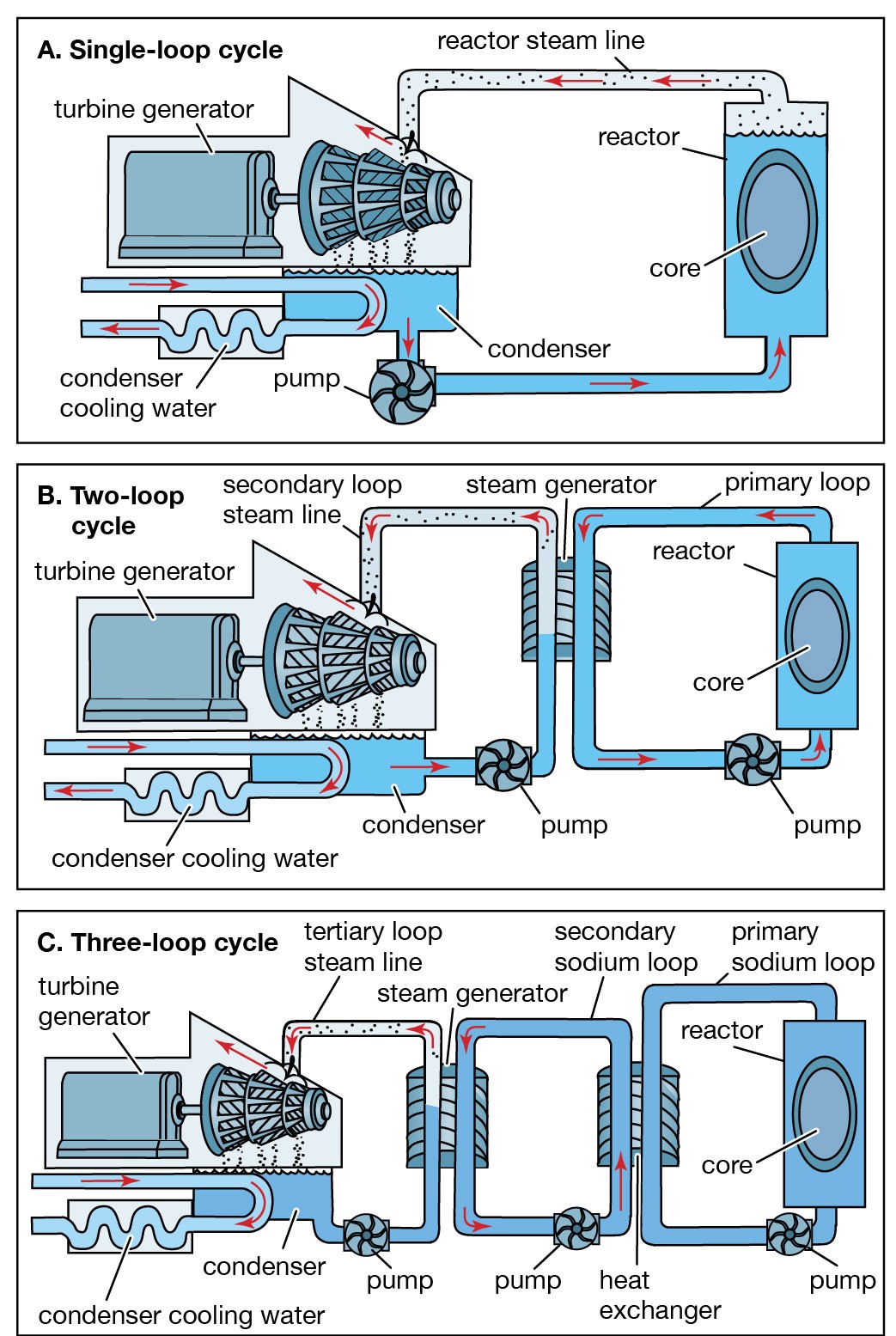
Read More In Linquip
- What are the Disadvantages of Nuclear Fusion?
- Heavy Water Reactor
- Differences Between Nuclear Fusion and Fission
- Thorium Salt Reactor
- What Is Nuclear Fission?
- Boiling Water Reactor
- What is Shunt Reactor
- Components of Nuclear Reactor
- How Does a Nuclear Reactor Work? A Closer Look at the Working Principle of Nuclear Reactors
- What is a Continuous Stirred-Tank Reactor? Application and Working Principles
- What is Breeder Reactor? Types and Applications
- Gas Cooled Reactor
- What Is Nuclear Fission?

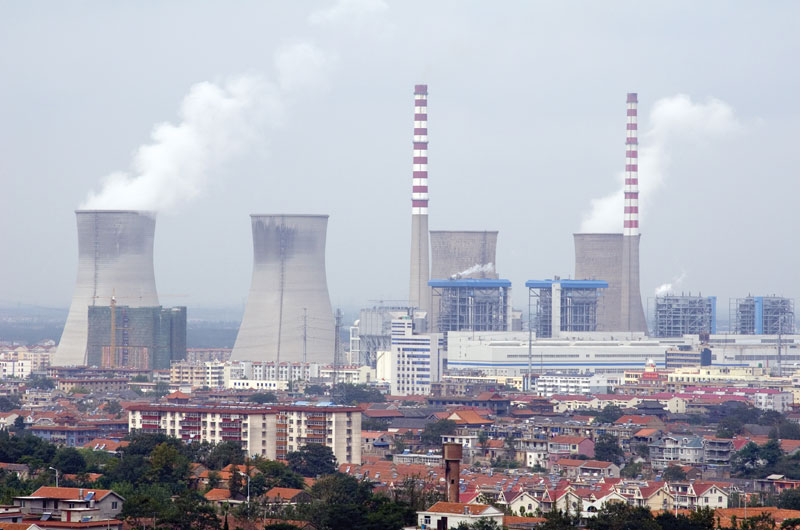


Why is there nothing here about integral fast reactors?